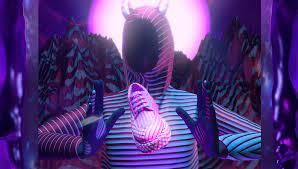Can the Metaverse change fashion as we know it?
The emergence of immersive interaction spaces is transforming digital environments into outstandingly collaborative and sensorial virtual worlds. Such potential levels of engagement presented by the future Metaverse are opening the door to a new era of fashion. Brands and designers are accordingly making out the opportunity to take their engagement with consumers to the next level and to unlock completely new revenue streams.
This new digital world brings the concept of virtual fashion to life in multiple shapes and disciplines where the industry can reach new cohorts.
In this regard, gaming is currently a major target for fashion brands, as it gradually turns into a near substitute of the real world where clothes are becoming a sign of in-game status (McKinsey & Company, 2022). Several brands are already partnering with immersive games such as Fortnite or Roblox by offering exclusive digital garments or ‘skins’ in the shape of in-game merchandise. In June 2021, a player acquired a Gucci bag on the game Roblox for more than $4,000, an amount that overly exceeded the price of the equivalent real-world physical bag (Gonzalez, 2020). And this is just an example of the new fashion wave in videogames, which is creating a new revenue stream for brands.
A considerable part of the enthusiasm about the Metaverse points in the direction of NFTs, as they can bring value in several ways that the fashion industry can utilize to their benefit. For instance, and more importantly, by utilizing blockchain, NFTs have undeniable proof attached to them of both the creator and the owner of the item (Joy, et al., 2022). This can solve the everlasting problem of authentication in the fashion industry, but now in the digital paradigm. Blockchain provides uniqueness and traceability, so brands’ identity is protected, together with their revenue streams (Gonzalez, 2020).
The rise of digital fashion in immersive platforms is also setting the scene for an emerging business model in the industry that plays a crucial role in the inevitable disruption process. Direct to Avatar (D2A) consists of the sale of items to game avatars or characters through the digital environment, and thus omitting all types of supply chain management steps needed to deliver physical products to a consumer (McKinsey & Company, 2022). Multinational brand American Eagle was one of the first to step into this disruptive initiative in July 2021, when it released a fully digital collection for Bitmoji, an avatar creation platform (Adams, 2021).
These and more advantages offered by the coming Metaverse is turning the fashion industry towards fully digital offerings and creating infinite opportunities for new revenue streams. This is especially shocking in an industry which has traditionally been sustained on physical interactions with consumers.
References
Adams, P., 2021. American Eagle debuts digital clothing on Bitmoji in creator-focused push. Marketing Dive, 5 August, pp. Retrieved from: www.marketingdive.com/news/american-eagle-debuts-digital-clothing-on-bitmoji-in-creator-focused-push/604402/.
Gonzalez, P., 2020. Digital Fashion In The Metaverse, Milano: Politecnico di Milano, School of Design. Retrieved from: https://www.politesi.polimi.it/handle/10589/188809
Joy, A., Zhu, Y., Peña, C. & Brouard, M., 2022. Digital Future of Luxury Brands: Metaverse, Digital Fashion and Non-Fungible Tokens. Strategic Change, 31(3), pp. 337-343. Retrieved from: https://onlinelibrary.wiley.com/doi/epdf/10.1002/jsc.2502
McKinsey & Company, 2022. The State Of Fashion 2022, Retrieved from: https://www.mckinsey.com/~/media/mckinsey/industries/retail/our%20insights/state%20of%20fashion/2022/the-state-of-fashion-2022.pdf?shouldIndex=false: McKinsey & Company


I really enjoyed reading your article and seeing someone mention the new opportunities that arise for the fashion industry thanks to blockchain and Web3. Brands in general (luxury or not) create an entry barrier for customers because of their price. But when looking at the NFTs ecosystem right now, people who can afford expensive items are not necessarily the same as in real life. So I believe that by entering Web3, fashion brands can conquer new customers – digitally and physically – and expand their community. Talking about community, this is also an interesting aspect for fashion brands, as right now they do not necessarily have anything uniting their customers. Web3 is highly based on communities and would therefore enable brands to give more importance to their own community. As you mentioned, the fashion industry now has an opportunity to turn towards fully digital products, so we could imagine a way to reward the most loyal customers with digital products for example. There is still a lot to learn and I am eager to see how fashion brands will turn it to their advantage.
Interesting to read! Web 3.0 is literally the trend of future based on the market analysis. Good to know fashion industry could also be involved in Metaverse, with the combined technology of blockchain and NFTs. Although Web 3.0 is not my type of thing, but I am really eager to see how it will be developed in the near future.